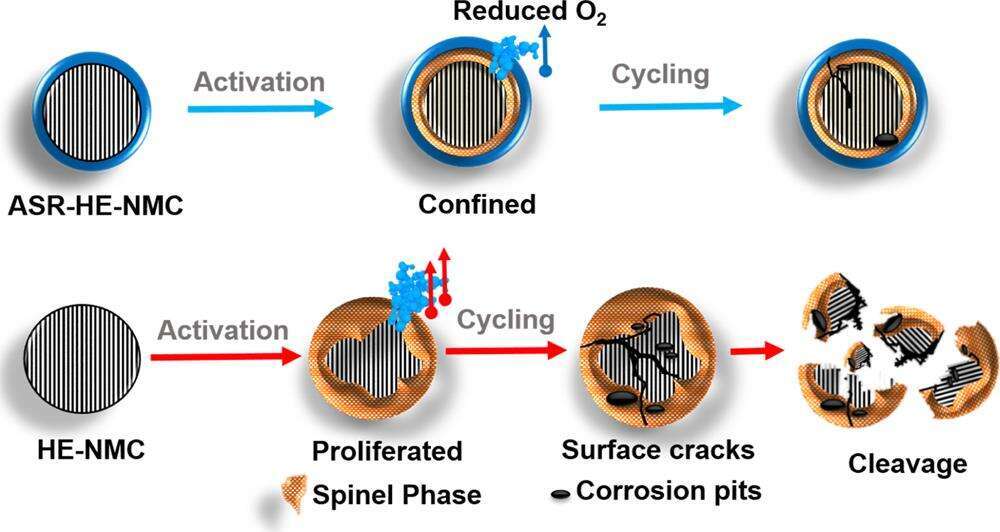
Mitigating structural instability of high-energy Lithium and Manganese-Rich LiNixMnyCoz Oxide by interfacial atomic surface reduction
2Institute of Nanotechnology and Advanced Materials, Bar-Ilan University, Ramat-Gan, Israel
3Department of Materials and Interfaces, Weizmann Institute of Science, Rehovot, Israel
Surface modification of electrode materials using chemical treatments [1] and atomic layer deposition [2] is documented as an efficient method to stabilize the lattice structure as well as to reinforce the electrode/electrolyte interface. Nevertheless, expensive instrumentation and intrinsic deterioration of the material under high-temperature conditions and aggressive chemical treatments limit their practical application. Here, we report enhanced electrochemical stability and performances by simple atomic surface reduction (ASR) treatment of Li and Mn-rich 0.35Li2MnO3·0.65LiNi0.35Mn0.45Co0.20O2 (HE-NCM). We provide mechanistic indications showing that ASR altered the electronic structure of surface Mn and Ni, leading to higher stability and reduced parasitic reactions. We demonstrate significant improvement in the battery performance with the proposed surface reduction, which is reflected by the enhanced capacity (290 mAh g−1), rate capabilities (∼15% enhancement at rates of 1 and 2 C), 50−60 mV narrow voltage hysteresis, and faster (twice) Li+ diffusion. Utilizing online electrochemical mass spectrometry (OEMS), we show in-operando that the reduced surface layer results in suppressed side reactions. We further characterized the surface coating with high-resolution transmission electron microscopy, X-ray photoelectron spectroscopy, and solid-state NMR before and after cycling. The results presented herein address all the critical challenges associated with the complex HE-NCM material and thus provide a promising research direction for choosing a relevant methodology for surface treatment.
References:
[1] Chen, Z.; Chao, D.; Lin, J.; Shen, Z. Mater. Res. Bull. 2017, 96, 491−502
[2] Zheng, J.; Gu, M.; Xiao, J.; Polzin, B. J.; Yan, P.; Chen, X.; Wang, C.; Zhang, J.-G. Chem. Mater. 2014, 26, 6320−6327

Powered by Eventact EMS